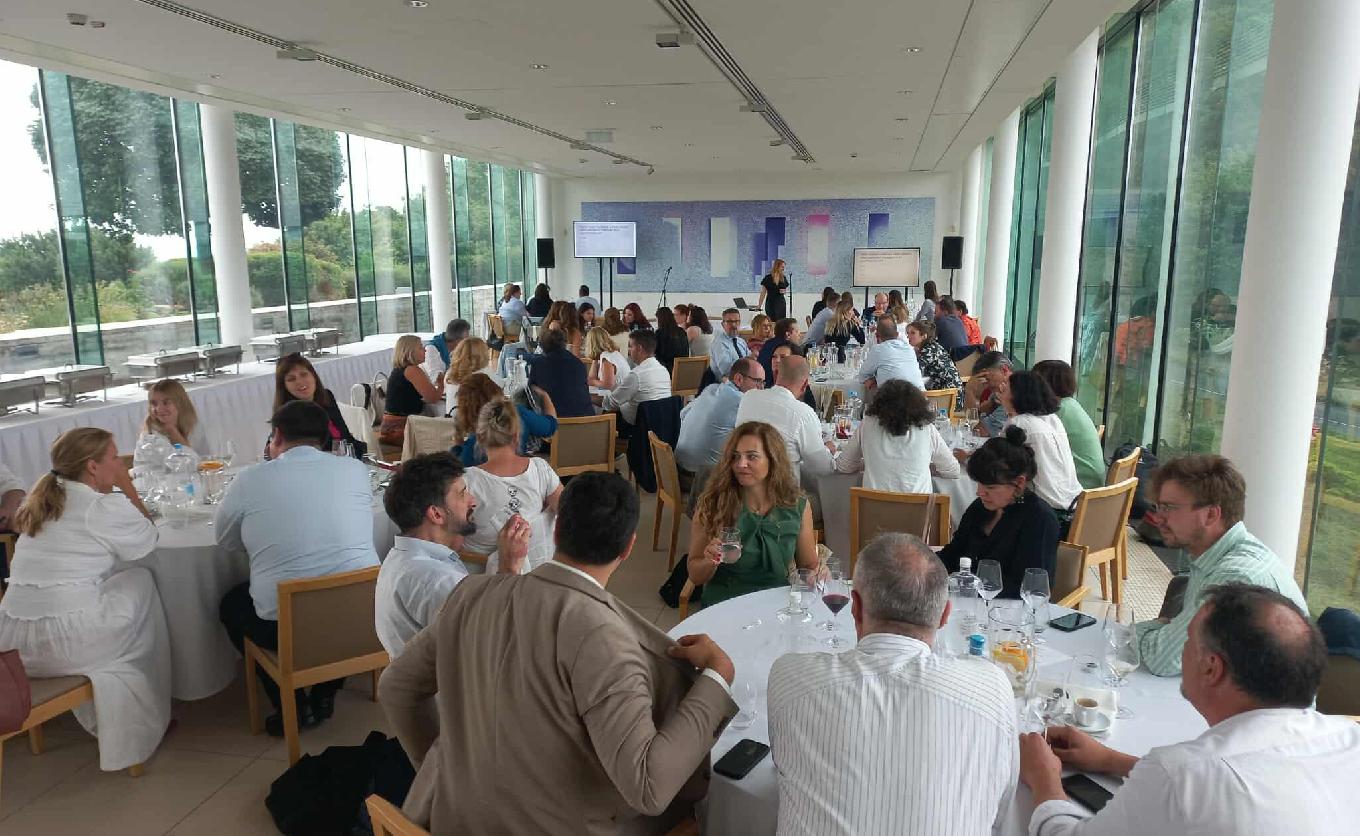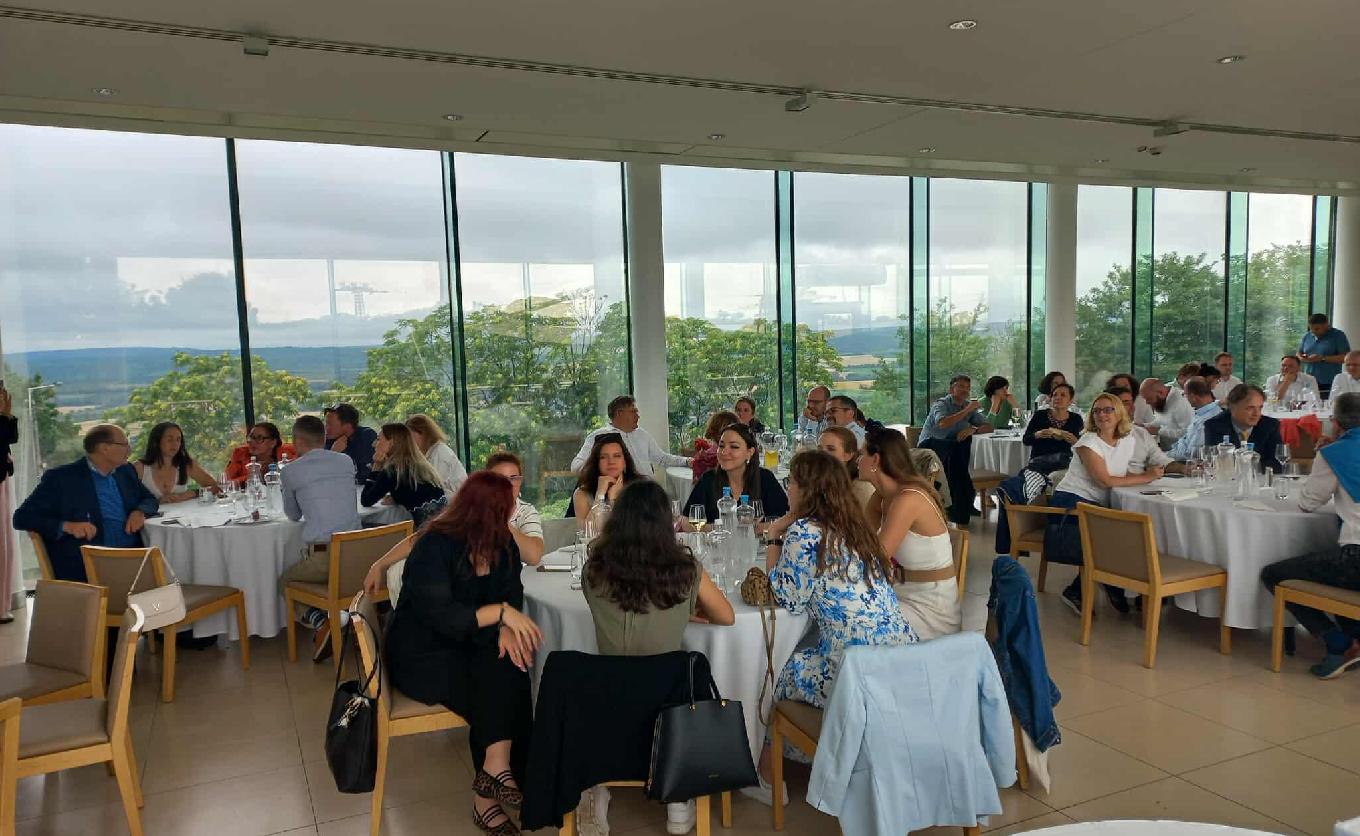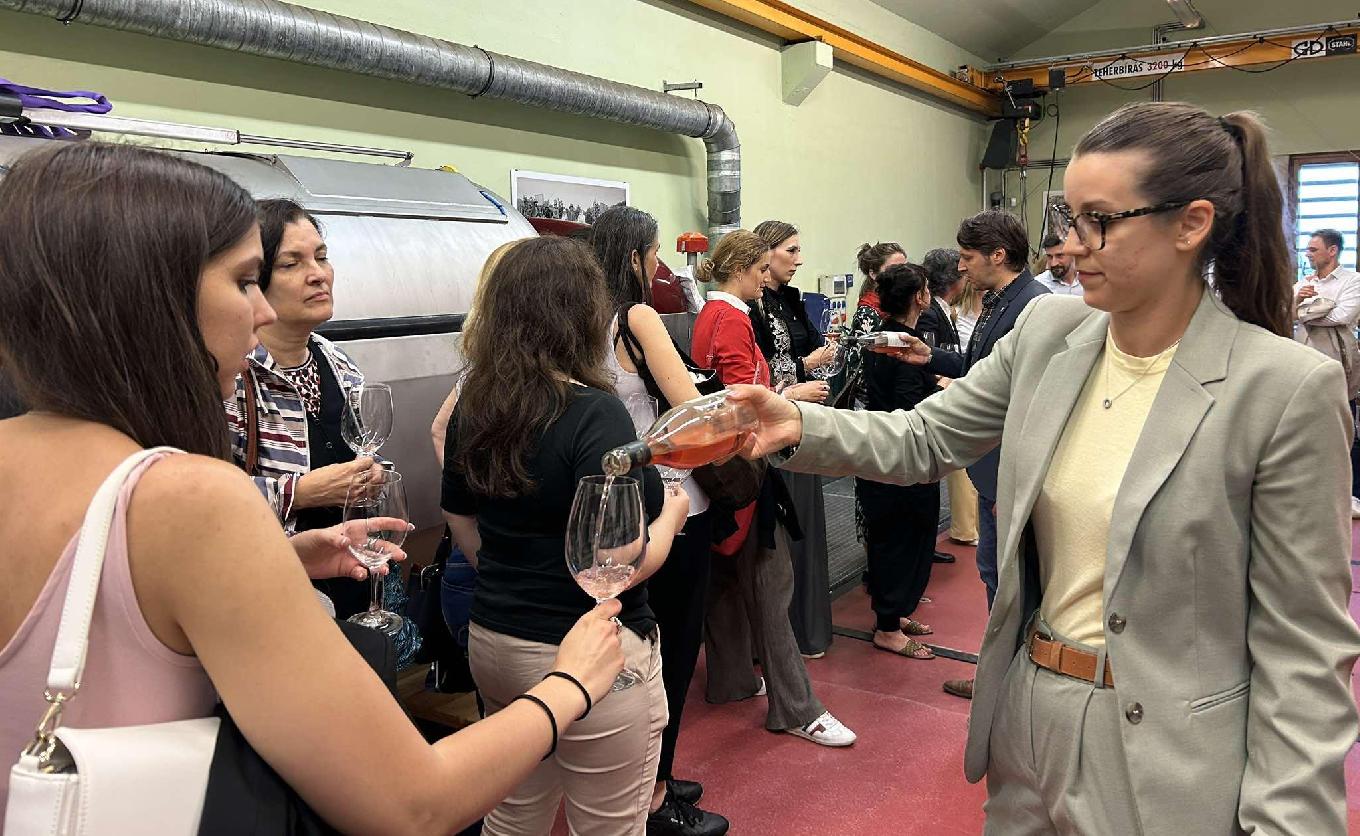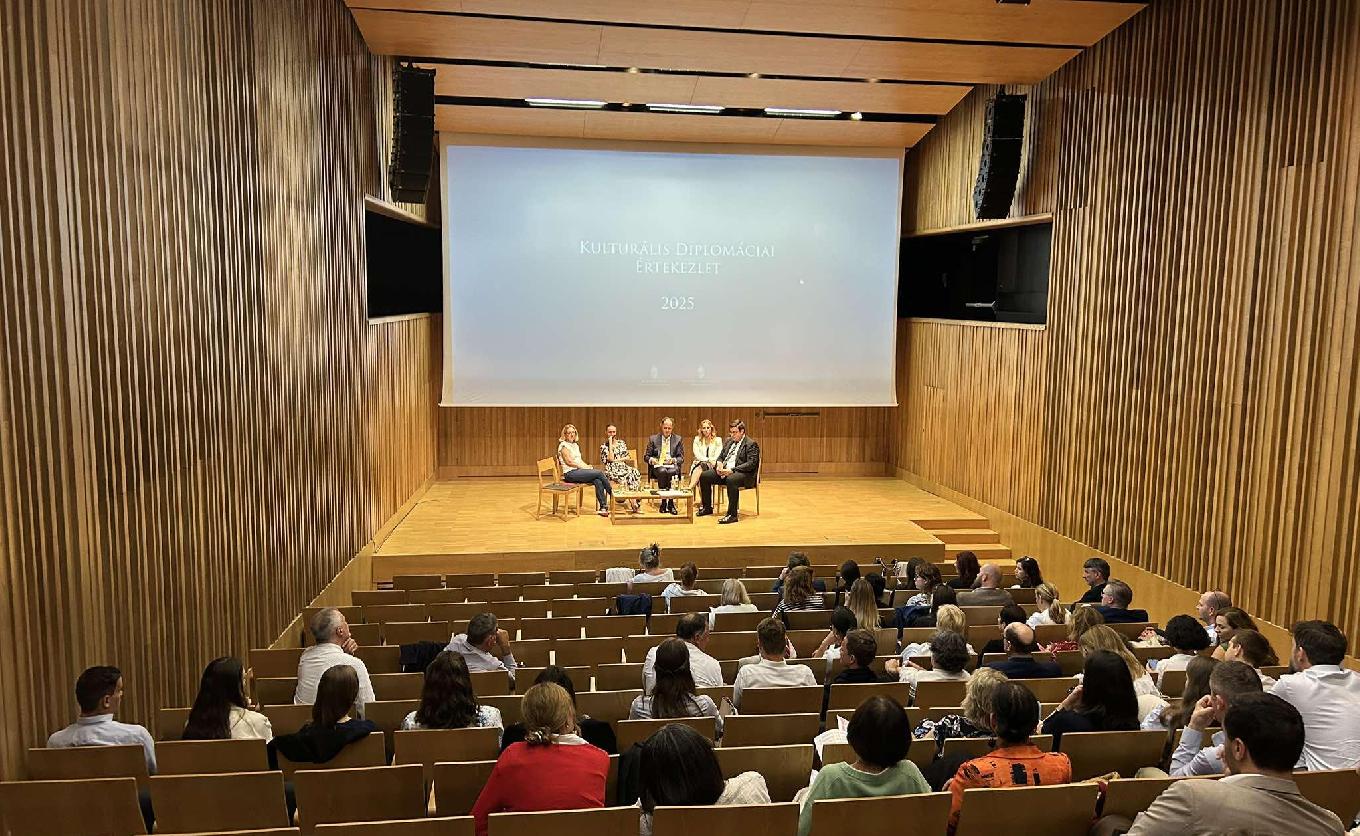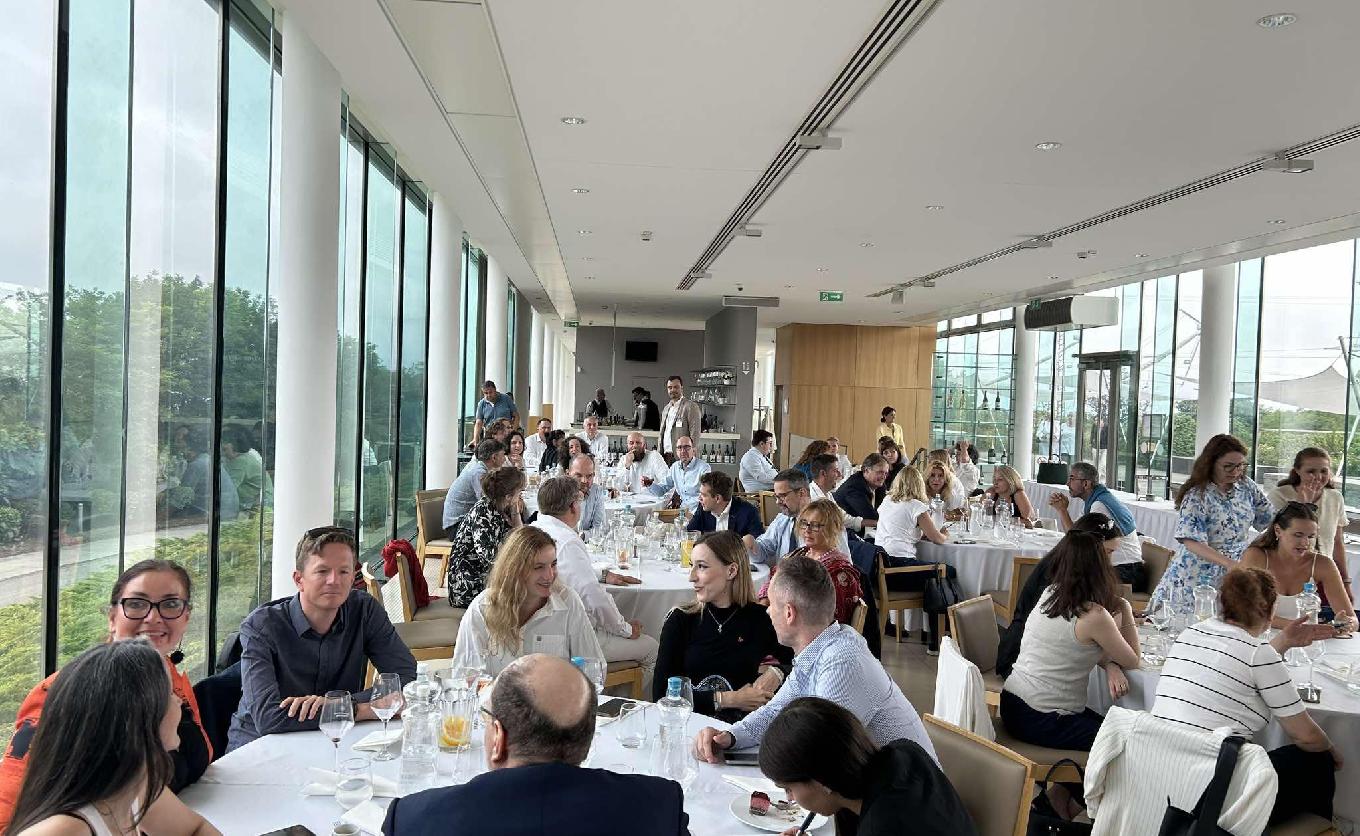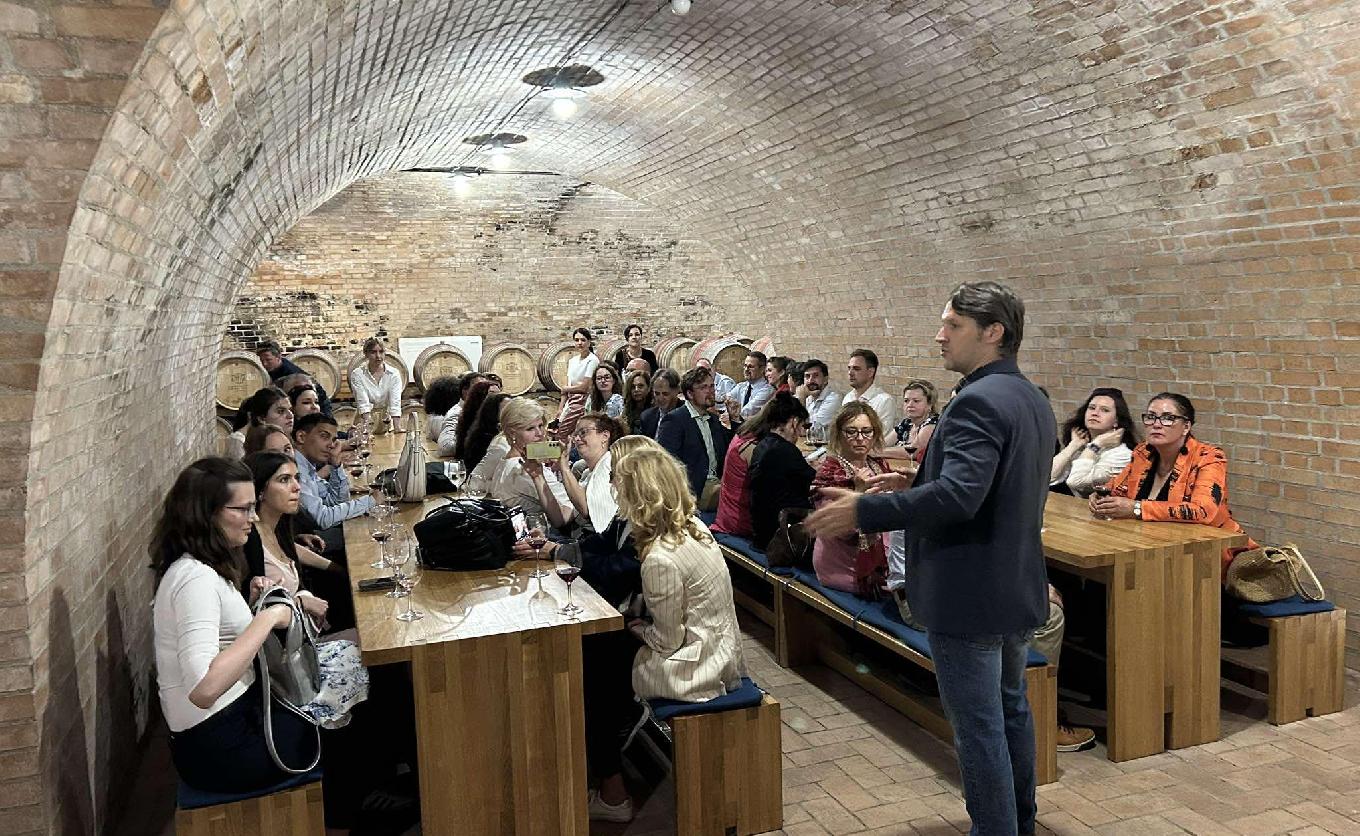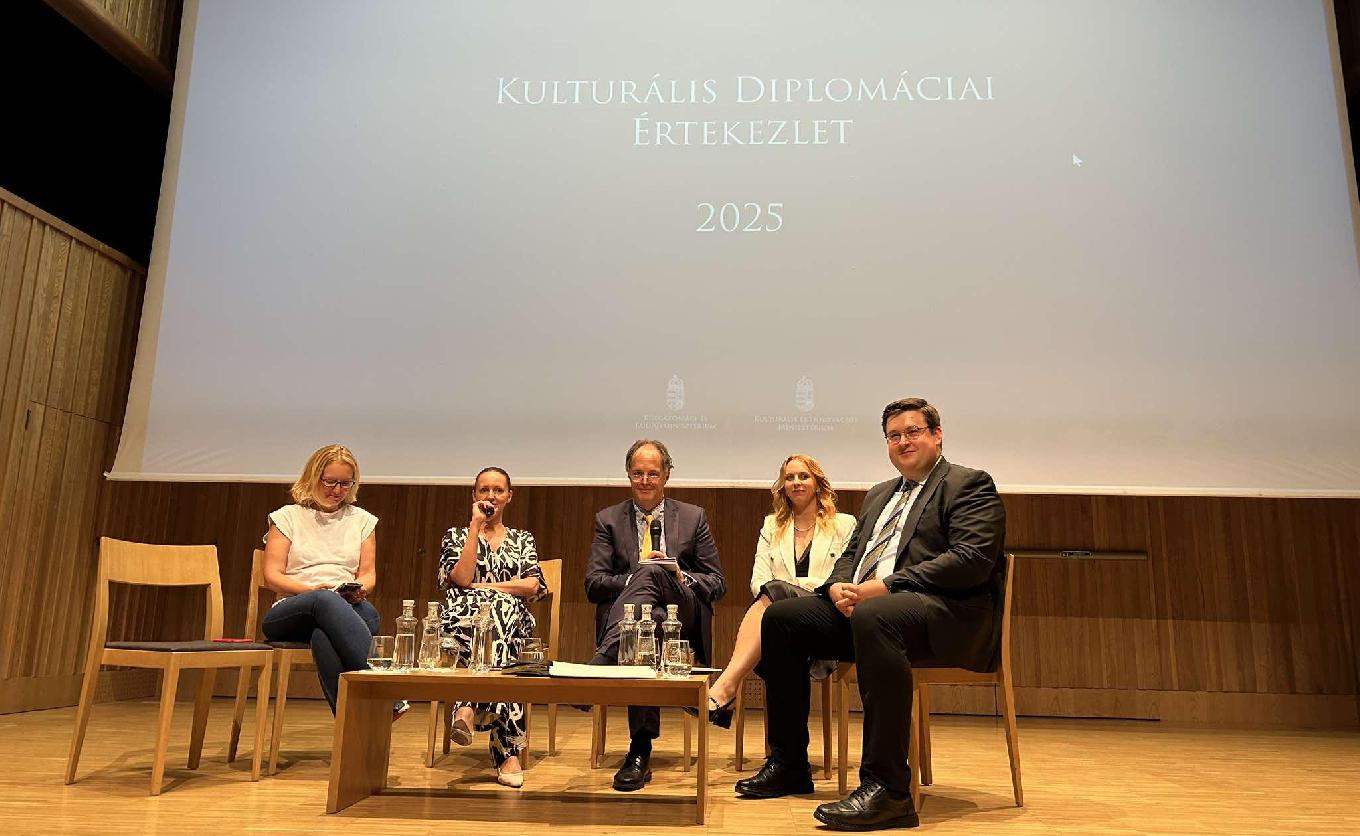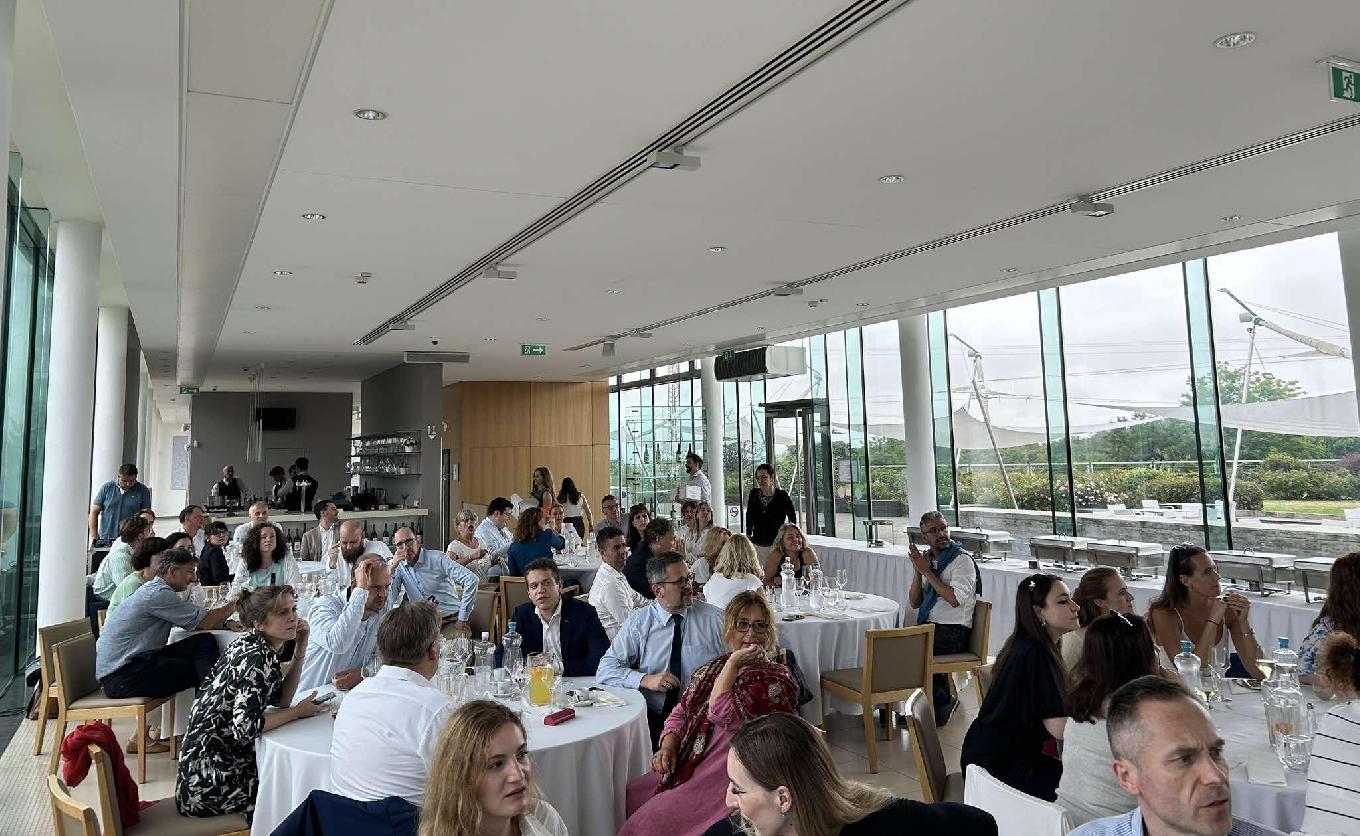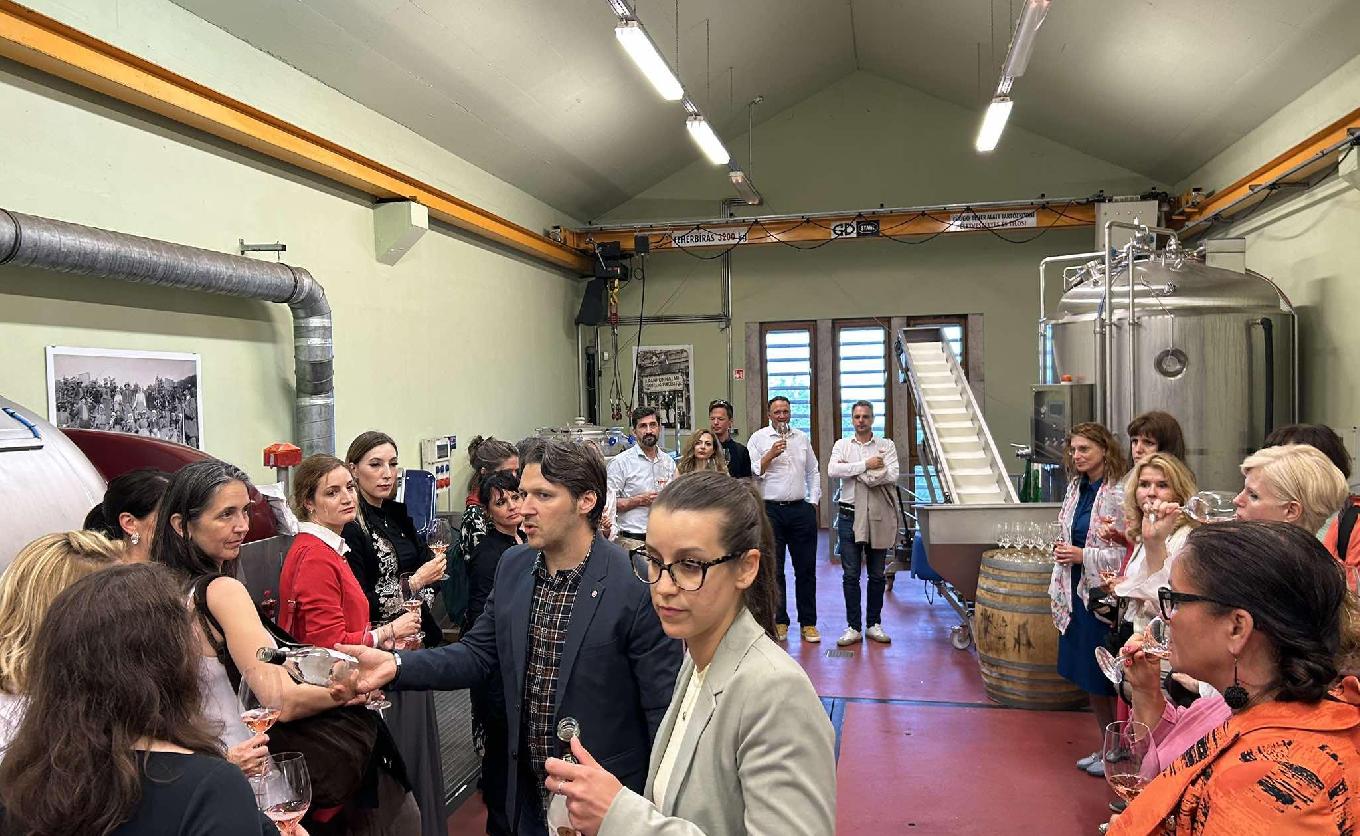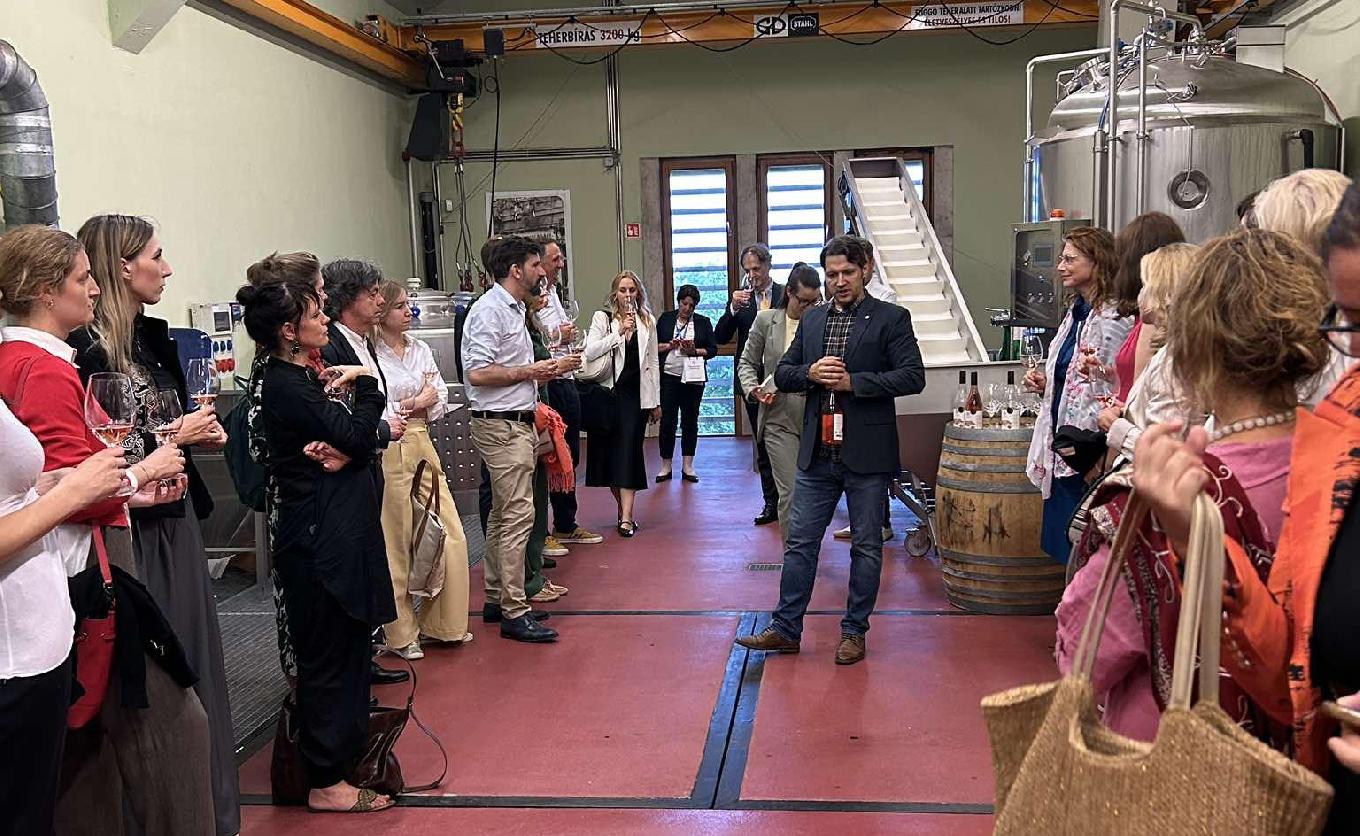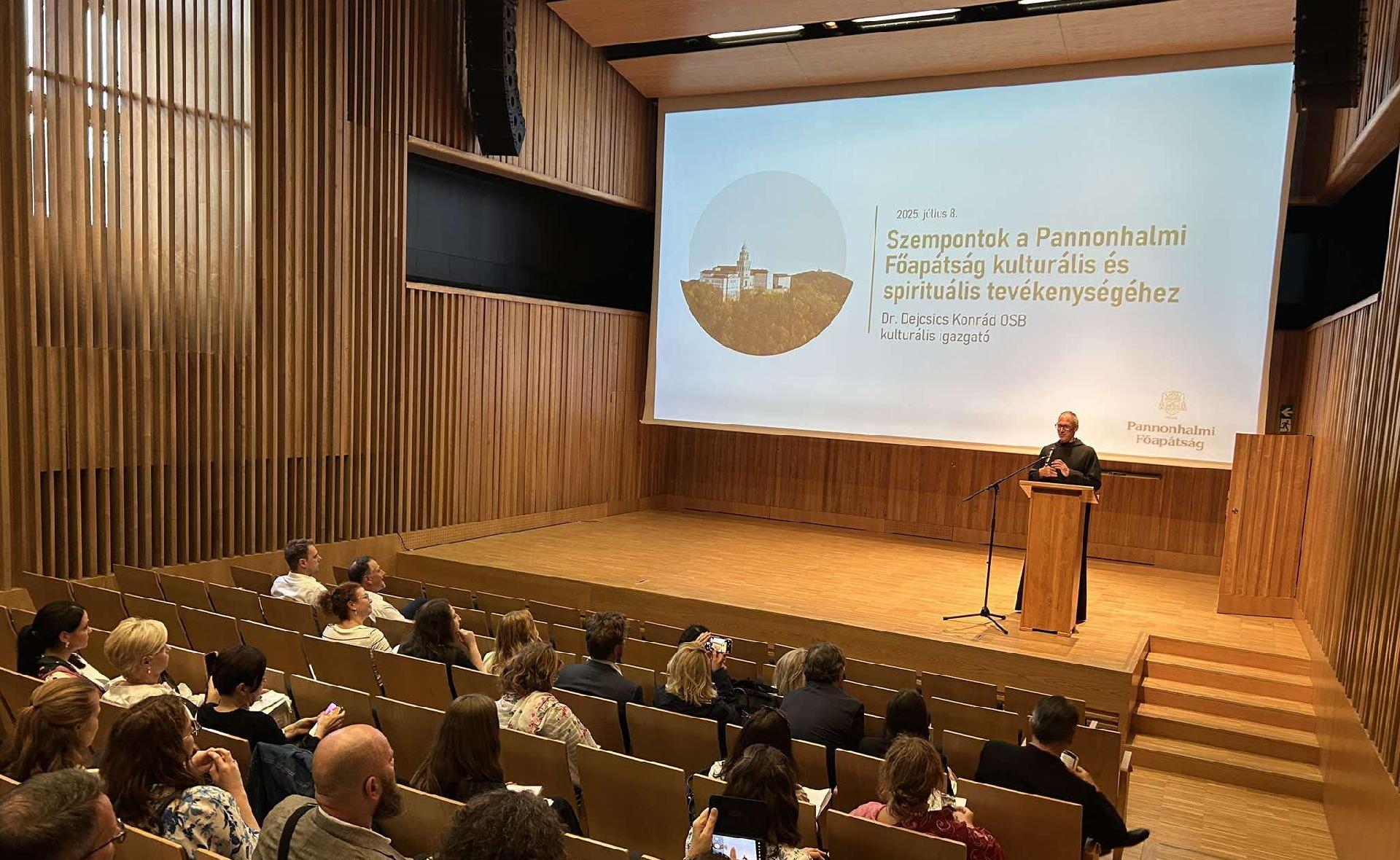
Conference on Cultural Diplomacy at the Benedictine Archabbey of Pannonhalma
The second day of the conference was hosted by the Benedictine Archabbey of Pannonhalma. In his opening speech, Gábor Csaba, Deputy State Secretary responsible for cultural diplomacy, stated that Pannonhalma is an outstanding venue where Hungarian culture, Christian tradition, and the European spirit converge. For a thousand years, it has set an example of how the values of the past can be preserved and passed on in harmony with the challenges of the present. He encouraged cultural diplomats to embody this spirit by serving as bridges between past and future, between Hungary and the world’s cultural communities.
The hosting Benedictine officials, in their welcoming remarks and presentations, emphasised the rich cultural heritage of the Archabbey as well as the contemporary cultural values and operational concept of present-day Pannonhalma. Father Konrád Dajcsics OSB, Director of Culture, shed light on the processes through which tradition is preserved and honoured, while simultaneously incorporating market-driven and innovative methods into the Archabbey’s cultural programming. In this way, the spiritual centre of Pannonhalma, through the fusion of heritage and innovation, can serve as a model of best practice in cultural management on an international level.
The cultural strategy of the Archabbey of Pannonhalma is built upon three main pillars: the preservation of tradition, cultural innovation and collaboration, and a professional management approach. These elements are woven into a coherent whole to ensure that the Archabbey remains both an authentic historical site and a modern, inspiring cultural hub. The monastery’s archives and library safeguard thousands of medieval charters, codices, incunabula, and rare manuscripts. Preservation of these documents, the restoration of damage caused by a recent pest infestation, the disinfection of valuable books using climate-conscious technologies, and ensuring continuous access are all top priorities. The Archabbey’s tourism developments — including parking facilities, a gastronomic offering, a professional winery and related retail — were established through strategic planning. In addition, bespoke programmes such as exclusive guided tours designed for companies reflect a professional, service-oriented mindset. All of these initiatives provide a stable economic foundation for the Archabbey’s cultural mission, through a commitment to quality and innovation delivered within a structured, strategic framework.
In this way, the Archabbey of Pannonhalma combines deep respect for tradition with a modern, management-driven approach: through climate control, archival preservation, tourism development, contemporary collaborations, and immersive programmes, its cultural heritage is not only preserved but continually renewed, evolving into a dynamic centre of cultural value.
In the inspiring setting of the Archabbey, a relaxed yet professional exchange of ideas took place led by State Secretary Anita Kiss-Hegyi, with the participation of the directors of the Hungarian cultural institutes abroad. The State Secretary explained that a key element of her mandate is to build on the extensive and in-depth knowledge base represented by the leadership of the Hungarian foreign institutes. As part of this initiative, the directors will be approached over the summer — likely by the end of July — with a questionnaire to be completed anonymously. They will be invited to share their proposals and ideas regarding the most important and urgent tasks related to the operation of the institute network, as well as other forward-looking concepts. In addition, the State Secretary expressed her interest in the personal stories that uniquely shape each institute’s cultural presence and foster emotional engagement with their programmes. These narratives may also play an important role in shaping a renewed communication strategy.
An important task identified was the systematisation of challenges affecting multiple institutes, often manifesting as recurring issues. The leadership of the Ministry for Culture and Innovation responsible for cultural diplomacy is working along the lines of a “problem map” or “risk map” to assess these difficulties. In parallel, they are developing a “solution map” aimed at facilitating more effective operations in the future.
As a summary of the two-day conference, it is worth recalling that more than a century ago, Kuno Klebelsberg, Minister of Culture, clearly recognised that culture is not merely decoration or the backdrop to events, but the driving force behind national renewal — a vital resource in times of crisis and a guiding compass amid uncertainty. “Culture is still a magic remedy today,” Klebelsberg said, but only if we actively engage with it. The programme of the cultural diplomacy conference was built around this idea, with insightful presentations and thought-provoking dialogues adding further substance to initiatives already underway. Following a period of rejuvenation over the summer, our institutes will continue their cultural diplomacy mission from autumn 2025 onwards, integrating and applying the ideas discussed into their plans.

